Search
51315-5671-Corrosion Mechanism of Mild Steel in CO? Aqueous Environment
Also Purchased
02235 IMPROVEMENTS ON DE WAARD-MILLIAMS CORROSION PREDICTION AND APPLICATIONS TO CORROSION MANAGEMENT
Product Number:
51300-02235-SG
ISBN:
02235 2002 CP
Publication Date:
2002
$20.00
00034 THE CORROSION INHIBITOR AVAILABILITY MODEL
Product Number:
51300-00034-SG
ISBN:
00034 2000 CP
$20.00
01162 EROSION-CORROSION FAILURES IN CHEMICAL PLANT STEAM CONDENSATE PIPING SYSTEMS
Product Number:
51300-01162-SG
ISBN:
01162 2001 CP
$20.00




